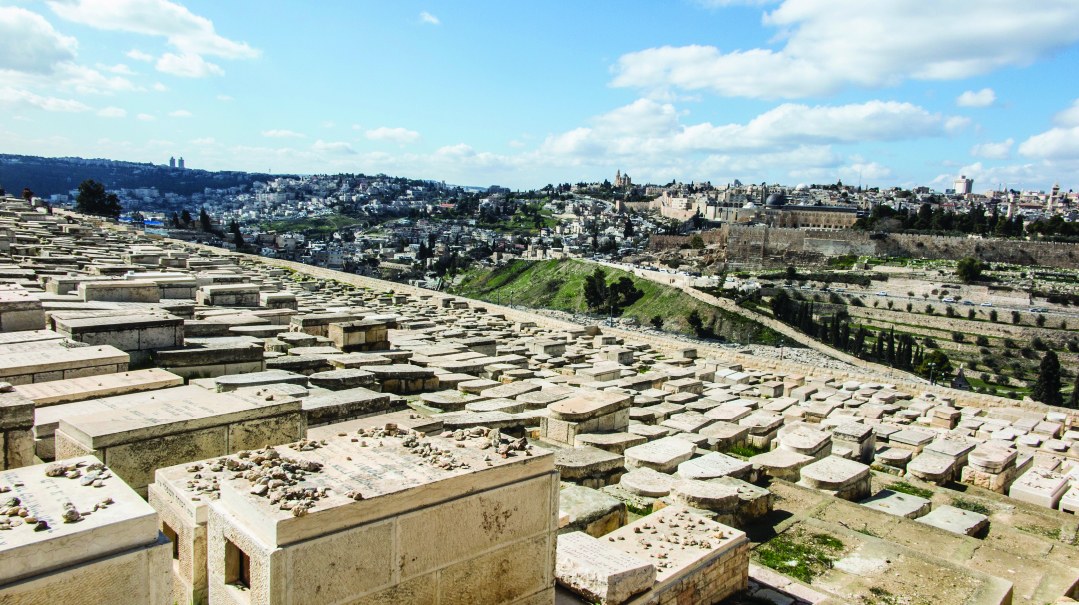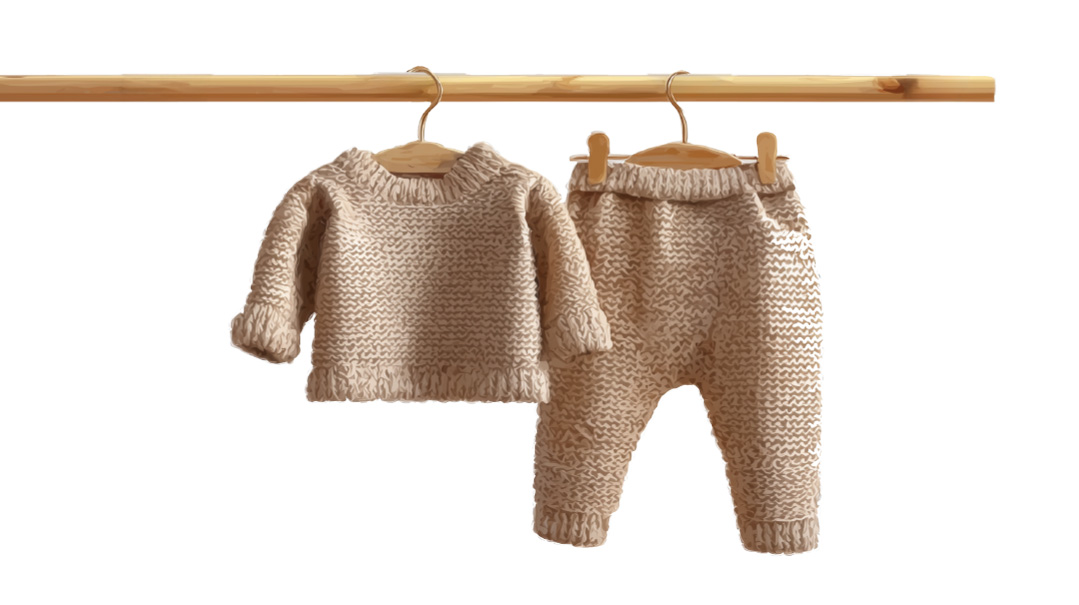Surrounded by Eternity

Lost among the graves, I wondered why I was there

Going to the cemetery has a way of putting things into perspective.
Tammy and I go way, way back. We share the kind of friendship that makes it possible for neither one of us to hesitate to call if something came up, even after eight or ten years without contact.
Something came up.
Tammy’s husband was about to undergo a serious medical procedure. A few days before the procedure was scheduled, Tammy felt a strong urge to daven at her mother’s kever, asking that her mother beseech Hashem that the procedure go well.
But Tammy lives in the US, and her mother is buried in Israel, so she settled on doing the next best thing: asking someone to daven at the kever. Since I live not far from the cemetery, Tammy asked me if I’d be willing to go. She was quick to assure me that if I couldn’t go, she’d understand, especially as the procedure was only four days away — and two of those days were Friday and Shabbos.
I pondered her request. I’ve attended a few funerals, but besides kivrei tzaddikim, I’ve never gone to a kever to pray. I was expecting to find some inner resistance to going. Fear, perhaps, or pressure. I was surprised to feel no negative emotions at all. Rather, I felt privileged. Chosen.
I couldn’t explain the feeling even to myself, and silence rested between us.
Tammy misunderstood my hesitation. “I know it sounds weird,” she said. “It’s just—”
“No, it doesn’t,” I interrupted her. “I’m actually really glad you called. I’ll go.” I asked if there was anything special she wanted me to do or say. She just wanted me to go and talk to her mother, to both her parents, and ask them to daven that the procedure be successful and that her husband have a complete recovery.
This cemetery is on the main highway between Beit Shemesh and Jerusalem. I’ve lived in Beit Shemesh for over 20 years, so although I’ve never been inside this cemetery, even my legendary horrible sense of direction couldn’t mess this up. Tammy emailed me exact directions how to find the kever once inside.
I left on a Friday afternoon, with plenty of time to go and come back before Shabbos. I drove along the highway and exited where the cemetery is supposed to be.
Somehow, I made a wrong turn, and took an extra ten minutes to find the main gate. I took this mishap in stride. Actually, I was reassured, since I figured I was already yoztei getting lost for the day, and I had very specific instructions how to proceed from there.
While still in the car, I opened my phone to reread her directions. They seemed to perfectly fit the location I was in. I put my phone on silent and stowed it in my purse. I found a short path leading to the two steps she told me to expect.
As soon as I entered, even before I started reading the names on the stones, I sensed the change in the air. It felt still. Heavy. My footsteps slackened, my breathing slowed.
I began to read the names.
Rivka bas Zalman. Yosef Chaim ben Shimon. I reached the end of the first row.
Noach ben Eliyahu. Tzipora bas Aryeh Leib. I reached the end of the second row.
Names and names and more names. The third row and the fourth and fifth.
Could I have missed it? It was supposed to be toward the front of this section. I’d noticed that some of the graves were newer. Perhaps “front” was no longer the front.
I kept going.
Nechama Leah bas Meir. Shprintza Feigel bas Meshulem Hershel Hakohen.
It seemed there was no end to the names.
I reached the end of the section. I hadn’t found the kever.
I was confused. So confused.
I walked back to the first row. I began reading the names all over again, more slowly than before.
Stone by stone, row by row.
I reached the end of the section.
There was a stone partition, one or two stones high, that separated this section from the one adjacent. Perhaps I’d find the kever in the first or second row there.
Family Chadad. Esther Frieda bas Moshe Dovid.
So many names.
So many neshamos.
Why was I here? What was I doing?
Another stone partition. I searched the next section and the next and the next. It was only when I reached the road bisecting the cemetery that I had to admit to myself that this could no longer be considered the first section or the first few rows.
And still I couldn’t give up.
I walked outside the cemetery and pulled out my phone. I called Tammy. Explained what was happening. Asked her for better directions, more information, a block or section number — anything.
She called a few family members who’d been to the kever more recently. No one had any more information. Everyone else who’d gone had been able to find the kever easily, even without a block or section number. It was just me and my propensity to get lost that made something so simple into something so complicated.
I decided to speak to a niece who’d been there most recently. Maybe she could enlighten me as to my mistake. She told me that there was another entrance. Relief flooded me.
I found the path going down, and up a different short path I discovered the two steps she told me to expect.
I began to read the names.
Chana Yocheved bas Boruch. Meilech ben Shlomo Tzvi Hirsch. I reached the end of the first row. And then the second row.
Names and more names and more names. The third row and the fourth and fifth.
I walked through the entire section.
Another stone partition. And another.
I stopped walking and sighed. I’d spoken to Tammy’s niece, gotten exact specific instructions. I recalled her exact words, “To the right of the chapel.”
Maybe I’d confused what “to the right” meant, since the chapel had two entrances. I entered another section.
More names.
The sun was sinking lower in the sky. Shabbos was approaching. Yet my feet moved even more slowly as my eyes begged to rest on every stone. I felt a strong need to read each name carefully, to hear it inside my head. To connect with the neshamah in front of me. To ask, What do I need to know? What’s the secret to accomplishing what can only be accomplished now, before it’s too late? What knowledge can you reveal, now that you’re in a place of higher wisdom?
There was one more section in the realm of possibility. Just this one section, and then I’d have to leave.
There were six steps leading up to this section, not two. But the stone wall looked newer; perhaps they’d recently replaced it with a stronger wall? A taller one, with a few more steps?
I walked up the steps, began to read the names.
Zahava Golda bas Avraham. Yeshayahu ben Yitzchak Isaac. I reached the end of the first row. And then the second row. Then the third row and the fourth and fifth.
I walked through the entire section. I still hadn’t found the kever.
I was filled with a sense of wonder, curiosity, and awe. Why? I spoke directly to Hashem. Why? What is Your plan? Why did You send me here? What do You want me to accomplish right now? I want to know, to do the shlichus you sent me here for. I asked Him for guidance.
The stillness embraced me. But I was no closer to finding the kever.
I knew it was time to go. I realized I might never understand why I’d been sent to that place at that time.
My feet took me back to the section that had seemed to so perfectly match the description. I looked, one last time, at the first three rows of stones but no more. This was where I would daven, and wherever Tammy’s parents were buried, they either would or wouldn’t beseech Hashem on her husband’s behalf. There were other holy neshamos buried here, and I’d ask them to intercede of his behalf.
I opened my Tehillim. Unexpectedly, tears began to slide down my cheeks. Tears of connection, of release, of gratitude. I’d been wandering around a deserted cemetery for over an hour without seeing a person, car, or even a bird. The silence was broad and rich and powerful, accompanying me and guiding me and supporting me. I was surrounded by eternity, with no barriers between me and Hashem. It was one of the most spiritual experiences of my life.
I davened for Tammy’s husband and for Tammy. And then I davened for myself, my family, and others who are in need of Hashem’s mercy.
The sun lowered. Amid the mark of so much death, I felt so very alive. I slipped my Tehillim back into my bag and made my way out.
As I walked down the main road, I noticed another small section that also had two steps leading up. Not expecting to find the kever and with no time to search, I decided it wouldn’t hurt to check out just the first two rows in this section.
I walked up the two steps and immediately found the kever I’d been searching for. I opened my Tehillim again, said a few short perakim, davened for Tammy’s husband, and left.
Getting into my car, I called Tammy. She was relieved and grateful. She’d been engaged in her own heartfelt davening, wondering why this was happening. Her friends and family and everyone she’d spoken to while trying to get directions for me, all wondered — why? Why did this happen? Surely there must be some meaning in it. The consensus was unanimous — someone’s kever needed to be davened at. Someone needed a zechus.
The whole Shabbos, that thought ran through my mind. Was it really because someone’s kever needed to be davened at? I’d seen hundreds of names and had no recollection of whose kever I’d eventually stopped next to.
My curiosity didn’t abate over Shabbos, and on Sunday I drove back to the cemetery.
I retraced my steps and stood by the place where I’d poured my heart out. It was a space between four graves. And I wondered, which one was the kever — the specific kever I’d needed to daven at? It took me only seconds to find out. It wasn’t the who. It was the what — what was written.
I’d read, several months ago, that one of the ways to help you pursue your real goals — and not let life’s myriad distractions distract you from those goals — is to write your own epitaph. The idea appealed to me. What better way to know how to live your life than to ponder how you wish to be remembered after your death?
Only a few weeks ago, I’d made a certain lifestyle change with this in mind. Something I’d been long pursuing was, upon serious reflection, not something I’d particularly care to be remembered by. And I was finally ready to do something about it.
I was pleased and grateful that I’d been making slow and steady progress, leaving behind some old habits and practicing new ones. The changes themselves were often in the forefront of my mind, but the epitaph exercise was not; it had moved back into the archives.
Until I was back in the cemetery. In front of this particular grave.
This is what was written (with my translation from the Hebrew):
Faithful wife and dedicated mother
Beloved grandmother
An important woman
Special and tzanua
Eishes chayil
She aspired to raise a generation of G-d-fearing Jews
She was straight in her ways and pleasant in her middos
She was special in the eyes of those who knew her, all the days of her life
She gave generously of her energy to institutions of Torah and chesed
She was close to everyone, had a full heart
She was her husband’s faithful right hand in his community work
Till the end of days it will stand her in good stead
Born in America, loyal to our mesorah
I don’t know who this woman was. Unknowingly, I prayed at her kever. Unknowingly, she gave me a gift. In marking her death, I have more clarity for my life.
(Originally featured in Family First, Issue 729)
Oops! We could not locate your form.







